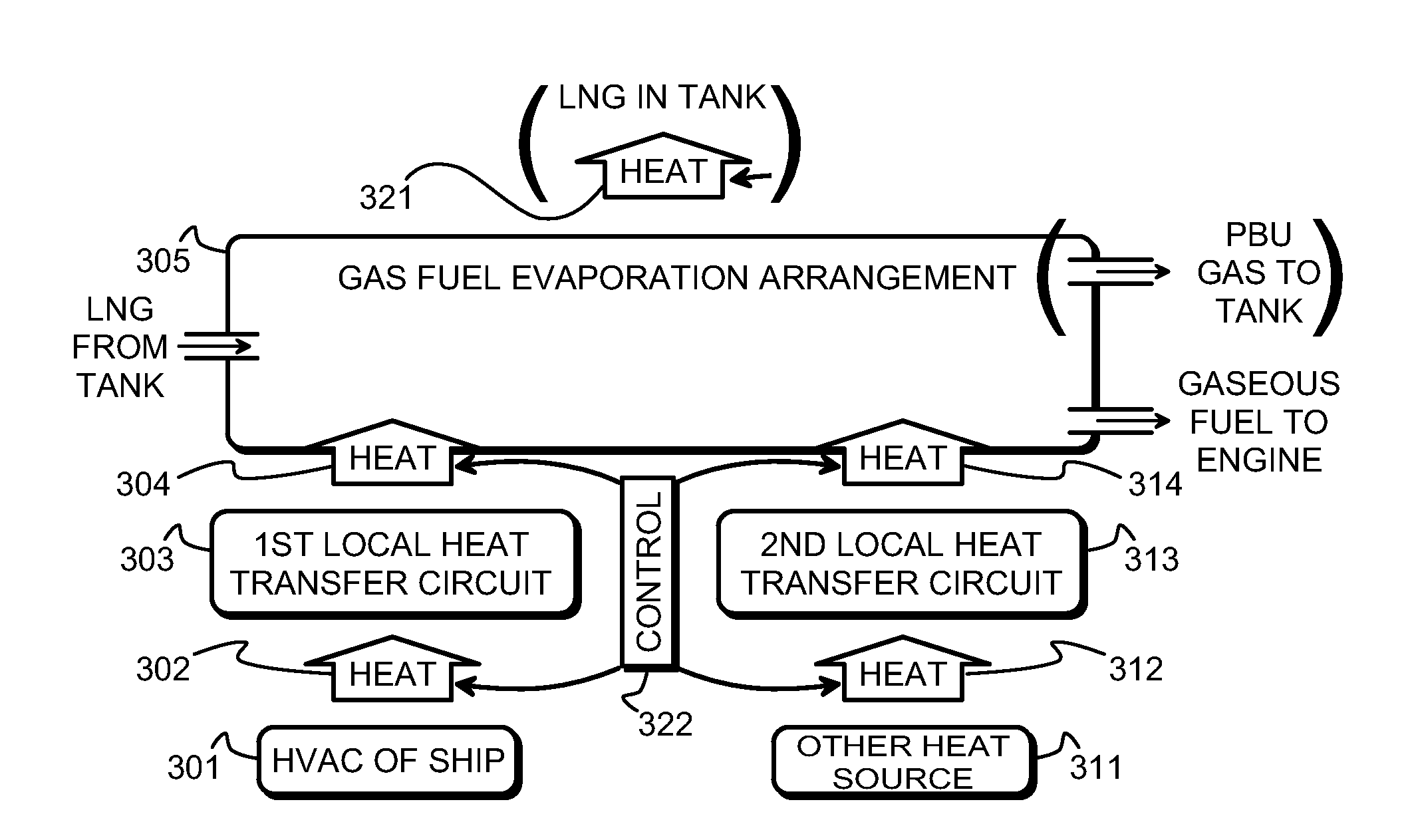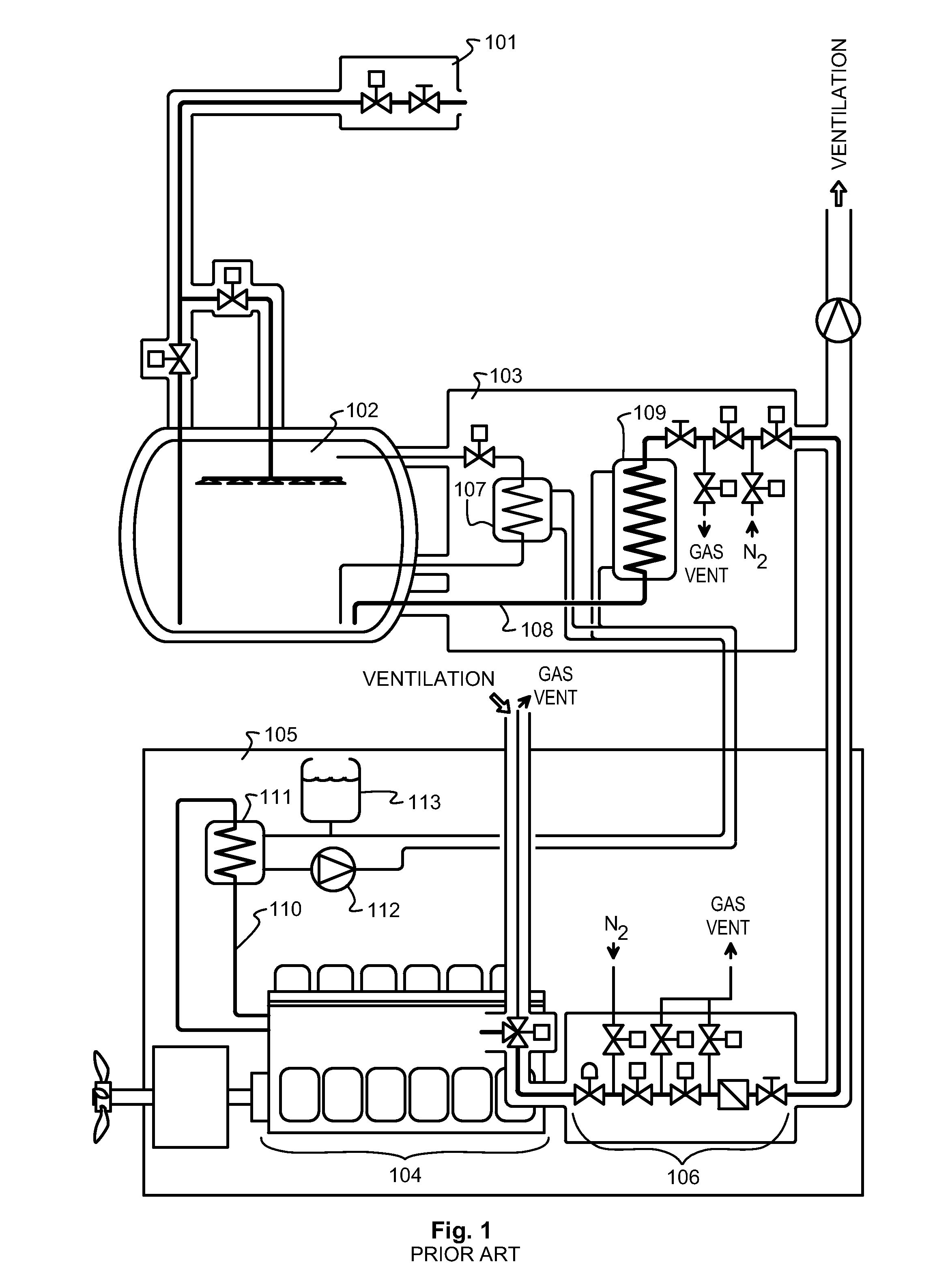Method and arrangement for waste cold recovery in a gas-fuelled sea-going vessel
a gas-fuelled sea-going vessel and waste cold technology, applied in the direction of liquid fuel feeders, machines/engines, container discharge methods, etc., can solve the problems of double all pump-related costs, a number of relatively expensive equipment, and a relative complicated structure, so as to simplify the work arrangement in the building of the ship
- Summary
- Abstract
- Description
- Claims
- Application Information
AI Technical Summary
Benefits of technology
Problems solved by technology
Method used
Image
Examples
Embodiment Construction
[0028]FIG. 3 illustrates some material and heat flows in a fuel storage and distribution system according to an embodiment of the invention. Block 301 represents generally HVAC systems, or systems that are used on board the vessel to produce and maintain temperatures that are below ambient temperature. Examples of what the HVAC system block 301 may comprise are air conditioning of cabins, lounges, restaurants, and other internal spaces; refrigeration of cold stores and other storage rooms; refrigeration of cargo holds or individual containers; and cooling of potable water.
[0029]Arrow 302 shows how heat is transferred from the HVAC systems to a heat transfer circuit, which is called the first local heat transfer circuit 303. Arrow 304 shows how the first local heat transfer circuit 303 is arranged to transfer such received heat to liquefied gas fuel that is handled in the fuel storage and distribution system. Conceptually the last-mentioned transfer takes place within a gas fuel evap...
PUM
 Login to View More
Login to View More Abstract
Description
Claims
Application Information
 Login to View More
Login to View More - R&D
- Intellectual Property
- Life Sciences
- Materials
- Tech Scout
- Unparalleled Data Quality
- Higher Quality Content
- 60% Fewer Hallucinations
Browse by: Latest US Patents, China's latest patents, Technical Efficacy Thesaurus, Application Domain, Technology Topic, Popular Technical Reports.
© 2025 PatSnap. All rights reserved.Legal|Privacy policy|Modern Slavery Act Transparency Statement|Sitemap|About US| Contact US: help@patsnap.com



